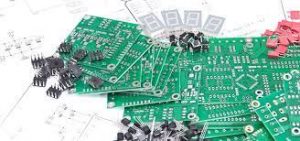Pick-and-Place Machines Play in Circuit Board Assembly
The primary function of pick-and-place machines revolves around the precise and systematic placement of surface mount components like resistors, capacitors, ICs, diodes and other miniature electronic parts on printed circuit boards (PCB). Pick-and-place machines are able to accurately position these small surface-mount parts on PCBs thanks to a nozzle that uses suction or mechanical grip to transport each component from feeders to their appropriate locations on bare PCBs.
As a result, they enable the assembly of complex electrical circuits with consistent performance, quality and reliability. Their unparalleled accuracy and precision bolster production yield, helping to eliminate defective parts from the manufacturing process and ensure trustworthy electrical connections within finished products. They are also highly adaptable and suited to handling a wide range of different component sizes, types and shapes.
A key to the success of pick-and-place machines is the pick and place file, or Component Placement List (CPL). The CPL is an ASCII text file that contains all of the positional parameters used by this equipment to correctly position each component on the printed circuit board assembly. This data includes a reference designator, the X and Y location of the center of the part, its rotation and whether it is to be placed on the top or bottom side of the circuit board.

What Role Do Pick-and-Place Machines Play in Circuit Board Assembly?
Moreover, a good CPL will include the exact dimensions of each component, including the tolerance profile parameter, which is a set of values that define how close or far from the edge of the board a specific component can be placed without causing a mismatch between the X and Y dimensions of the component. For example, placing a heavier component too close to the board edge could cause it to flex during soldering, which is not desirable.
In addition to these features, a good CPL will contain the necessary instructions for the pick-and-place machine to properly load each individual component onto the printed circuit board. The instructions will also include the order in which each component should be loaded, as well as any additional parameters that should be applied to each particular component.
Pick-and-place machines are generally programmed to handle the bulk of the component loading and placement operations for PCBs, but they are not a replacement for manual soldering. For this reason, they must be operated by a team of experienced engineers who are familiar with the operation and programming of these sophisticated pieces of equipment.
Additionally, picking and placing machines require a large amount of space in which to operate. Consequently, they are best suited for factories with sufficient floor space to accommodate their full operation.
As more companies rely on the use of PCBs in their products and devices, the demand for these efficient automated production tools will only continue to rise. The benefits of pick-and-place machinery, which reduce overall processing costs while boosting output and quality, make them an essential tool for the modern electronics industry. In addition, their compact and space-saving designs make them a valuable asset for manufacturers struggling to maximize the use of their factory floors and other resources.